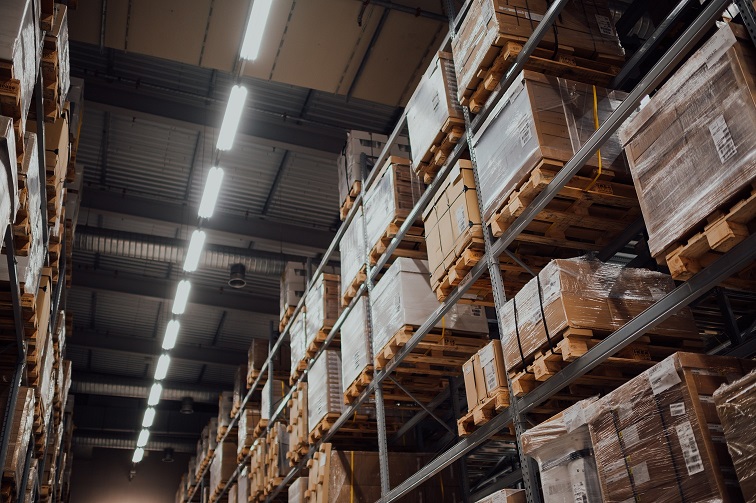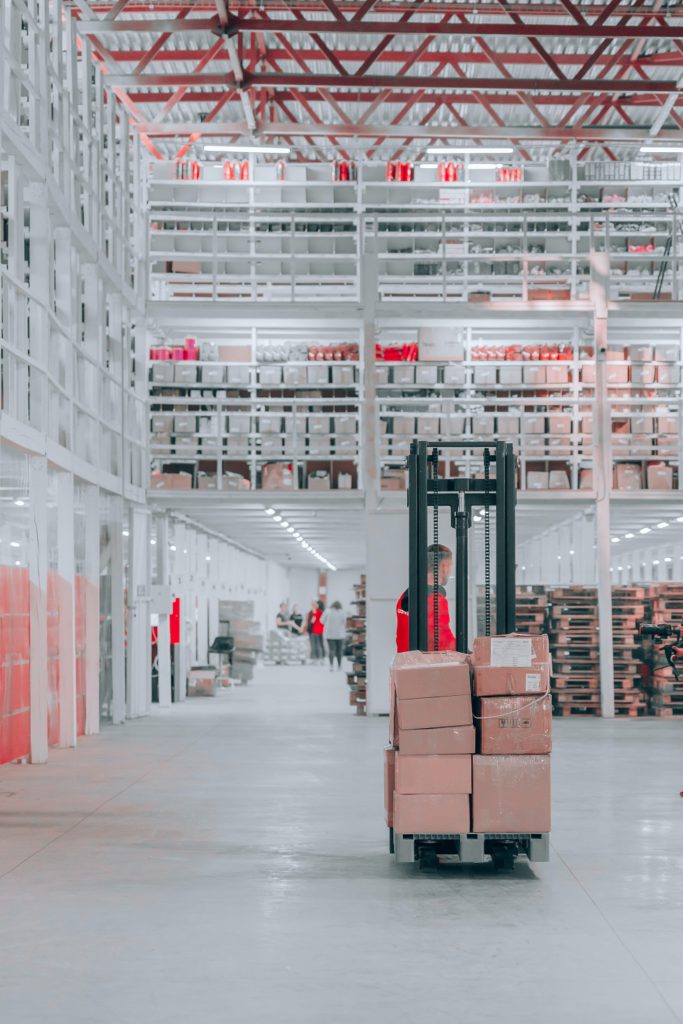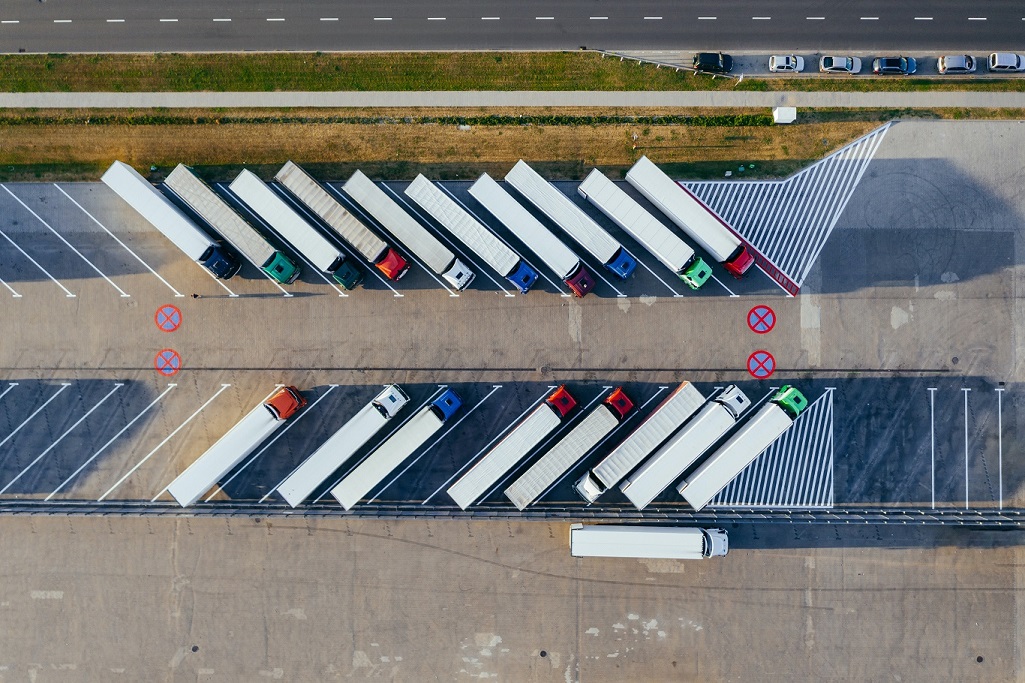Contact: +91 99725 24322 |
Menu
Menu
Quick summary: Smart Contracts, Data Analytics, Smart Packaging and Blockchain based traceability solutions build robust, secure and resilient supply chains.

The world economy depends on a fast and efficient global supply chain, an industry valued at more than $15 trillion. Supply chains are the backbone of a system’s economy, as millions of products are constantly being produced, moved, and shipped. Supply chain logistics is a network by itself.
This requires every company today to have a vast database to manage the business. As these databases expand, they increase in complexity and, along with the maintenance to keep them running, it is vital to understand and obtain the necessary information to help the business grow effectively. This is where logistics and supply chain management come into play.
Blockchain in supply chain logistics is considered one of the groundbreaking emerging technologies, as it provides continuous transparency and validation of transactions shared by multiple supply chain partners.
Read on to learn more about the technology behind next-generation supply chains and the many ways Blockchain-based logistics and supply chain management can impact the global supply chain industry.

Planning
Plan and manage all the necessary resources to meet customer demand for a company’s product or service. Once the supply chain is established, setting metrics to measure whether the supply chain is efficient, delivers value to customers, and meets the company’s objectives.
Sourcing
Choose suppliers to provide the goods and services needed to create the product. Next, establish processes to monitor and manage supplier relationships. Key processes are ordering, receiving, inventory management, and authorizing payments to suppliers.
Manufacturing
Organize the activities required to accept raw materials, manufacture the product, check its quality, package it for shipment and schedule its delivery.
Delivery and Logistics
Coordinate customer orders, schedule deliveries, dispatch shipments, invoice customers, and receive payments.
Returns
Create a network or process to recover defective, overstock, or unwanted products.
The time for these processes from start to completion is known as lead time. Supply chain managers control lead time and coordinate processes at each step to maximize customer satisfaction.
Supply chains can be contrasted with value chains, as they contribute to the final product differently. Supply chains aim to satisfy customer demands, while value chains seek to add value to a product in addition to its inherent value.
In addition to meeting everyday customer demands and streamlining elementary processes, Blockchain-enabled logistics traceability gives a competitive advantage to any supply chain seeking to respond to increasing needs for transparency, sustainability, and security.

The future of supply chain logistics is the platform, which is the medium that connects everything in a structured way and connects assets, devices, goods, and people to fulfill a purpose and create value for the connected beneficiaries, including the operators of the platform itself.
Data-driven platforms and distributed ledger technology (DLT), such as Blockchain, provide the tool and peace of mind to do so.
According to Verified Market Research, the blockchain in Logistics market size was valued at USD 3.3 billion in 2020 and is projected to reach USD 1620 billion by 2028, growing at a CAGR of 62.4%
Apart from Blockchain, other crucial technologies behind next-generation supply chains are the Internet of Things (IoT), artificial intelligence (AI), virtual reality (VR), robotics, and wearables.
According to Statista, 55.3% of logistics service providers state that they have invested money in Blockchain technology in that area.
In addition to security enabling the exchange of data between organizations, another interesting capability of Blockchain that is steadily becoming more widespread is implementing business process logic or smart contracts as part of transactions. This allows the automation of business processes that transcend organizational boundaries in a secure and decentralized manner that is not otherwise possible.
Smart contracts are self-executing programs (written in code on a Blockchain) that automate workflows once preestablished conditions are fulfilled. They are used to automate the enforcement of an agreement so that all participants can have immediate certainty of the outcome without the intervention of an intermediary or loss of time.
These agreements include sending notifications, releasing funds to the appropriate parties, issuing third-party certifications, etc. Once the transaction is concluded, the Blockchain is updated and cannot be altered. Only agents with permission can see the results.
Supply chain analytics respond to one of the main challenges within the supply chains: a lack of expertise to understand the data. Supply chain analytics plays its part by analyzing all the critical data that can foresee unexpected situations and help build strategies that favor the business in the long run.
Businesses that use supply chain analytics can plan and manage the space better for future demand, avoid inefficiency and wastage and optimize planning. It can tackle common challenges like demand forecasting, which comes with the growing complexity of customer demand and expectations. It does so by blending the data from previous orders with market analysis. It also ensures consistent research, analysis, and implementation to gain cost-effective techniques, does away with unnecessary processes, and makes the glitches in the workflow identifiable, ultimately eliminating them.
Blockchain in logistics and supply chain management brings shared, trusted data to fit into emerging technologies, such as the case of smart packaging, defined as a tool that, in addition to tracking and tracing a product throughout its lifecycle, allows to analyze and control the environment inside or outside the package to inform its manufacturer, retailer, or consumer on the product’s condition at any given time.

Over the past few years, there have been several innovations in smart packaging:
According to a Mord Intelligence report, the global smart packaging market is projected to grow at a rate of 4.2% to reach $44 billion by 2024.
Smart and connected packaging is attracting significant investment, as a Deloitte Insights survey affirms, and chief executives are beginning to see its value as a way to manage a brand’s inventory and product lifecycle management. The smart packaging industry is still nascent, but it promises to transform the way we consume and hold brands accountable.

For anyone who has worked in the agricultural supply chain, the logistical challenges are familiar: dealing with products that all too often have a short shelf lifespan in uncertain conditions, in large quantities, and with a lot of money at stake. In addition, supply can often be uncertain.
Companies such as Is it fresh? and Water.io are using smart packaging to solve food waste problems and collect data on the habits of their consumers.
The most common type of smart, functional packaging is smart labels, which, as stated in a Futurefoodasia report, are particularly effective in Asia-Pacific, where Internet subscribers are the highest in the world (72% of the population) and where the number of cell phone users.
According to research firm Mintel, from 2014 to 2018, the APAC region has seen an 83% increase in QR codes on consumer products. Approximately 9% of all products launched in Asia-Pacific carry a QR code, while that figure in Europe is 5%.
Although some types of smart packaging are still very much at their nascent stages, it is just another use case that shows Blockchain-enabled technology possibilities are vast.
TraceX is helping customers to understand data as an asset, leading to cutting costs, raising revenue, improving their brand image, and gaining greater consumer trust.
Learn how TraceX is helping companies identify their supply chain process pain points and helping automate their flow of information to prevent fraud and ensure the security of shared data.
